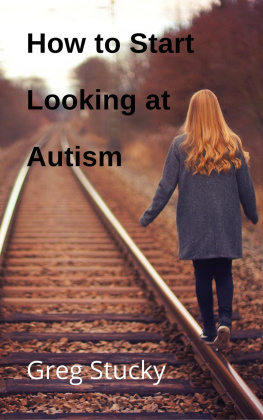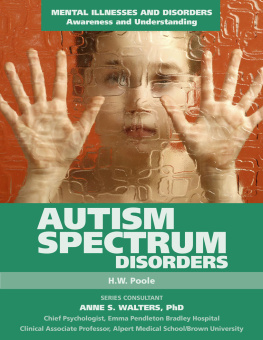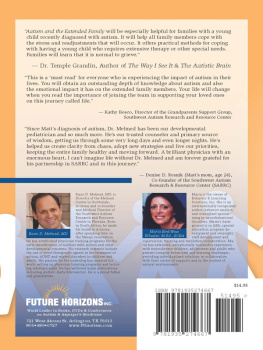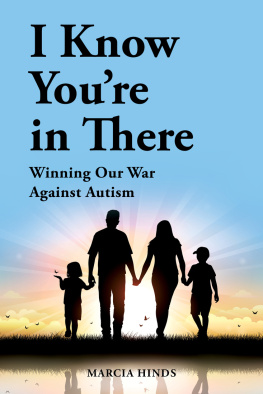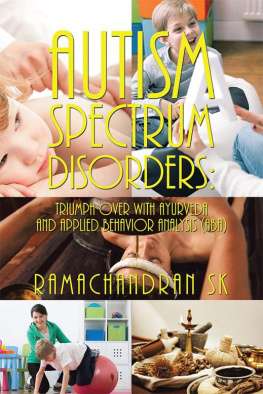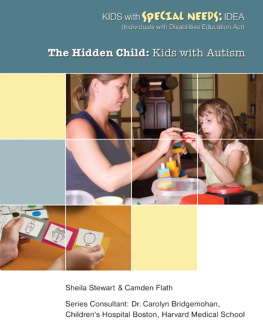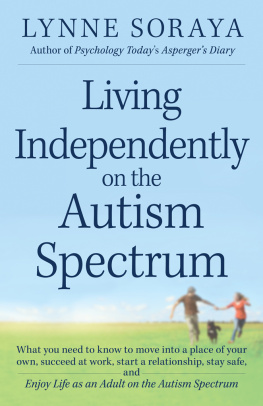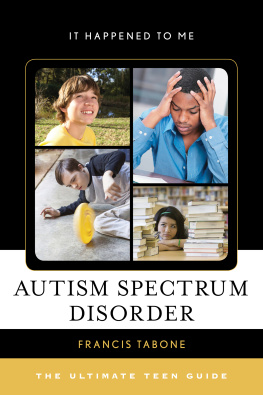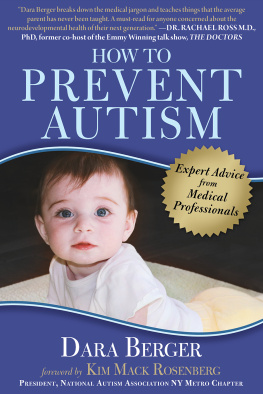How to Start Looking at Autism
Greg Stucky
How to Start Looking at Autism by Greg Stucky
2020 Greg Stucky
Second Edition
All Rights Reserved
No portion of this book may be reproduced in any form without permission from the publisher, except as permitted by US. copyright law. For permissions contact:
Visit the authors website at https://stucky.tech.
Other Books by this Author:
- How to Stop Looking Autistic
Websites by this Author:
- https://stucky.tech
- https://adequate.life
- https://gainedin.site
- https://theologos.site
- https://entertaining.space
To Adam, who took the risk to tell me what I needed to hear.
Table of Contents
A utism guides are a prolific cottage industry, especially about autistic children. As a high functioning autistic, I find most of their information offensive.
Autism wasnt much of a diagnosis until relatively recently. Even though autism diagnosis is still a soft science, some profiteers have labeled it an epidemic. Autism Speaks says 1 in 59 children are affected by autism and that 50,000 of them transition to adulthood each year. However, most of the information describes what to do without explaining why or how ASD (Autism Spectrum Disorder) operates.
That information is surface level. If you want to treat how someone thinks, you must understand how they think. This book gives clear, simple-to-understand truths about ASD. While I dont have Dr. before my name, Im a mid-functioning autistic who worked into high functioning, so I can see both sides of the issue.
The one takeaway I want you to glean from this book, more than anything else, is that ASD isnt really a disorder. Now that I know how to wield it, autism has been one of my strongest assets. If someone with mid-functioning autism can withstand going to a concert, they can handle anything.
We need to start calling it AS, not ASD. 10% of the planet would be autistic if we could measure everyone on the spectrum. If we zoomed in on roles in STEM, history, writing, and accounting, that number would easily quadruple.
However, this doesnt mean that you can treat them like everyone else. I want you, the non-autistic (neurotypical, or NT), to understand in plain English who youre dealing with. While NTs usually need intimacy and affirmation, AS needs more boundaries than anything else.
The irony of AS is that its risky for you to share the diagnosis with them. Far too many AS discover AS and focus strictly on their shortcomings and self-identify as a special needs victim. The only reason I succeeded was, ironically, because my family neglected to follow up with an autism diagnosis. The ASD identifier can only empower someone to become successful if they understand both their strengths and weaknesses.
Im writing to neurotypicals who work or live around AS, along with anyone who suspects someone they know may have it. Theres very little knowledge on AS. Far too often, youre either veering into the extremes of unnecessary harshness or unhealthy enabling. The awareness campaigns arent helping much because it propagates the victim narrative.
By the end of this relatively short book, youll have a heightened awareness of what autism is and how to approach autistics. I havent seen this content discussed at length elsewhere, so this is my contribution to the discussion. Please use the ideas in these pages before any more AS resign themselves to inadequacy.
If you think youre autistic, I recommend my parallel book: How to Stop Looking at Autism . Its built with you in mind. For the rest of you, onward!
A utism is now a buzzword . Movies and TV like Rain Man , Extremely Loud and Incredibly Close , and Silicon Valley clarify how autism looks. Unfortunately, visual media often fails to show how the mechanism of how autism thinks.
AS doesnt have any specific tells. Most of them do, however, exhibit poor eye contact, sporadic behaviors, intelligence, and poor social skills.
AS thought processes run through separate pathways than neurotypicals (NT). The only way to gauge AS without being one is through experience imagining how they think.
AS is vague. Im not kidding when I said that 10% of the population is likely AS! Its vague because science hasnt found many universal characteristics. We still dont see any formal AS testing for adults. Most of the therapies and treatments are intuitive guesstimates by professionals.
The following is my theory on autisms neurology. Ive placed the web-searchable symptoms in bold for your convenience.
How Autistic Brains Work
T his is the simplest autism test I know of. NTs see large letters and zoom down to the small ones. AS sees the small letters first, then build up their relationships into the large ones. Imagine seeing and thinking about everything that way.
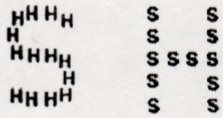
T o paraphrase Temple Grandin, the autistic mind attends to details while the normal brain ignores them.
Humans start chunking from infancy. Chunking is grouping small things together as summarized larger things, then making patterns off it. For example, a baby will learn that 3 lines connected at the ends is a triangle and 4 is a square. Genetic or environmental factors will give a child difficulty chunking things .
Human brains receive a tidal wave of information, assign values to it, throw most of it away, then store copies of whats left. An AS childs poor chunking means they store more useless information. Their inability to rank information makes them hypersensitive and/or insensitive to stimuli . Too much information at once will overload them (also known as over-stimulation ).
To cope with stimming , AS children often create fixed objects as givens. Givens can be the order of things in a physical space, a familiar object, a certain method, or anything else that feels familiar. This over-attachment creates over-stimulation when a given thing changes .
AS people use behavioral coping mechanisms along with givens. Most of them have trouble making eye contact because of how much information conveys through the eyes. They will often self-soothe with repeating behaviors, activities or words . They may focus on external givens like spinning objects or, in extreme situations, self-harm .
AS often battle extreme anxiety in interpersonal situations, mostly from trying to understand and meet expectations. That stress from managing the many social expectations creates a variety of tics .
Next page
